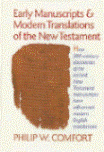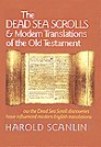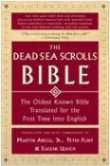Ancient Road Publications |
 |
|
Tools for the Study of Biblical Manuscripts By Kyle Pope Most of my life I have had an interest in languages. As a preacher this interest has been directed to the study of the languages the Holy Spirit utilized in revealing the Biblical text. When I first started preaching, and had not yet been able to formally study Hebrew and Greek, like most Bible students I found myself bewildered by the occasional footnote or textual variant in our English translations. When I began to study the Biblical languages, this task was no less daunting. The “critical apparatus” (the notes contained at the bottom of many Greek or Hebrew Bibles), often filled half of a page and was a maze of abbreviations, symbols, and unfamiliar expressions. For the preacher who has waded through this maze, or for the young man just starting out, I would recommend four resources which make this task a little easier. The
Complete Text of the Earliest New Testament Manuscripts. (CTE) Edited by Philip W. Comfort
& David P. Barrett (Grand Rapids, Michigan: Baker Book House. 1999,
hardcover, 653 pages). Most students of the Bible are familiar with the
 Early Manuscripts & Modern Translations of the New Testament. (EMMT) by Philip Wesley Comfort. (Grand Rapids, Michigan: Baker Book House. 1990, paperback, 235 pages). This work, written by one of the editors of (CTE), does not contain the complete texts of the manuscripts mentioned above. Instead EMMT contains a description of each manuscript and a list of verses which are impacted by their readings. No knowledge of Greek is required to use this text, and it serves as a good introduction to the larger complete work. The
Dead Sea Scrolls Bible.
(DSB) Edited by Martin Abegg, Jr., Peter Flint & Eugene Ulrich. (New
York: Harper Collins. 1999). You can’t go through the check out line in a
grocery store without seeing tabloids make reference to some fantastic claim
associated with the Dead Sea Scrolls. While the real story behind these
manuscripts discovered around the Dead Sea from the 1940s and onward may not
sell tabloids, it is quite significant indeed. These manuscripts,
 The Dead Sea Scrolls & Modern Translations of the Old Testament. (DSMT) by Harold Scanlin. (Wheaton, Ill: Tyndale House Publlishers. 1993, hardcover, pp. 196). DSMT is the Old Testament parallel to EMMT. It has a description of each of the Biblical manuscripts from the Dead Sea Scrolls along with a list of passages which are impacted by them. Together with DSB (and Ulrich’s planned Qumran Bible) the student of the Old Testament would be able to analyze the manuscript evidence for any Old Testament reading cited in footnotes in their English Bible. * See The Byzantine Text-Type & New Testament Textual Criticism, by Harry A. Sturz (Nashville: Thomas Nelson Publishers. 1984.) for an analysis of the different readings found in the papyri and their relationship to the “received text.” |
|
Pope, Kyle. "Tools to Study of Bible Manuscripts" Biblical Insights 5.10 (May 2005): 11. |
|
Home Studies Outlines Photos Graphics Fonts Books Tracts Hymns Contact Us |
 dramatic events that led to Constantine Tischendorf’s discovery of the great
uncial (all capital letter) parchment known as Codex Siniaticus in the
19th century. Much less attention has been given to papyri discoveries of
New Testament manuscripts which came after this. These discoveries
fall into three major groups: The Oxyrhynchus papyri (named for the place of
their discovery; Oxyrhynchus Egypt), the Beatty and Bodmer papyri (each named
for after their owners; Chester Beatty and M. Martin Bodmer). What is
significant about these manuscripts is the fact that they represent texts that
(in some cases) are not only older than the uncial manuscripts, but which
represent readings that (in some cases) support the “received text” upon which
the King James translation was based.* Until the publication of CTE, a
student interested in what these documents revealed was forced to wade through
the critical apparatus of a Greek text (which contained only the readings an
editor found significant) or search for a library somewhere that had the
multi-volume original language published texts. CTE not only puts the Greek
text of all of these manuscripts together in one volume but includes an English
translation of each on the facing page. If a student finds this too
daunting an alternative text is:
dramatic events that led to Constantine Tischendorf’s discovery of the great
uncial (all capital letter) parchment known as Codex Siniaticus in the
19th century. Much less attention has been given to papyri discoveries of
New Testament manuscripts which came after this. These discoveries
fall into three major groups: The Oxyrhynchus papyri (named for the place of
their discovery; Oxyrhynchus Egypt), the Beatty and Bodmer papyri (each named
for after their owners; Chester Beatty and M. Martin Bodmer). What is
significant about these manuscripts is the fact that they represent texts that
(in some cases) are not only older than the uncial manuscripts, but which
represent readings that (in some cases) support the “received text” upon which
the King James translation was based.* Until the publication of CTE, a
student interested in what these documents revealed was forced to wade through
the critical apparatus of a Greek text (which contained only the readings an
editor found significant) or search for a library somewhere that had the
multi-volume original language published texts. CTE not only puts the Greek
text of all of these manuscripts together in one volume but includes an English
translation of each on the facing page. If a student finds this too
daunting an alternative text is: containing both Biblical and non-biblical texts represent the oldest Biblical
texts known to exist. In 1997 Brill & Eerdmans published a two volume
paperback called
containing both Biblical and non-biblical texts represent the oldest Biblical
texts known to exist. In 1997 Brill & Eerdmans published a two volume
paperback called